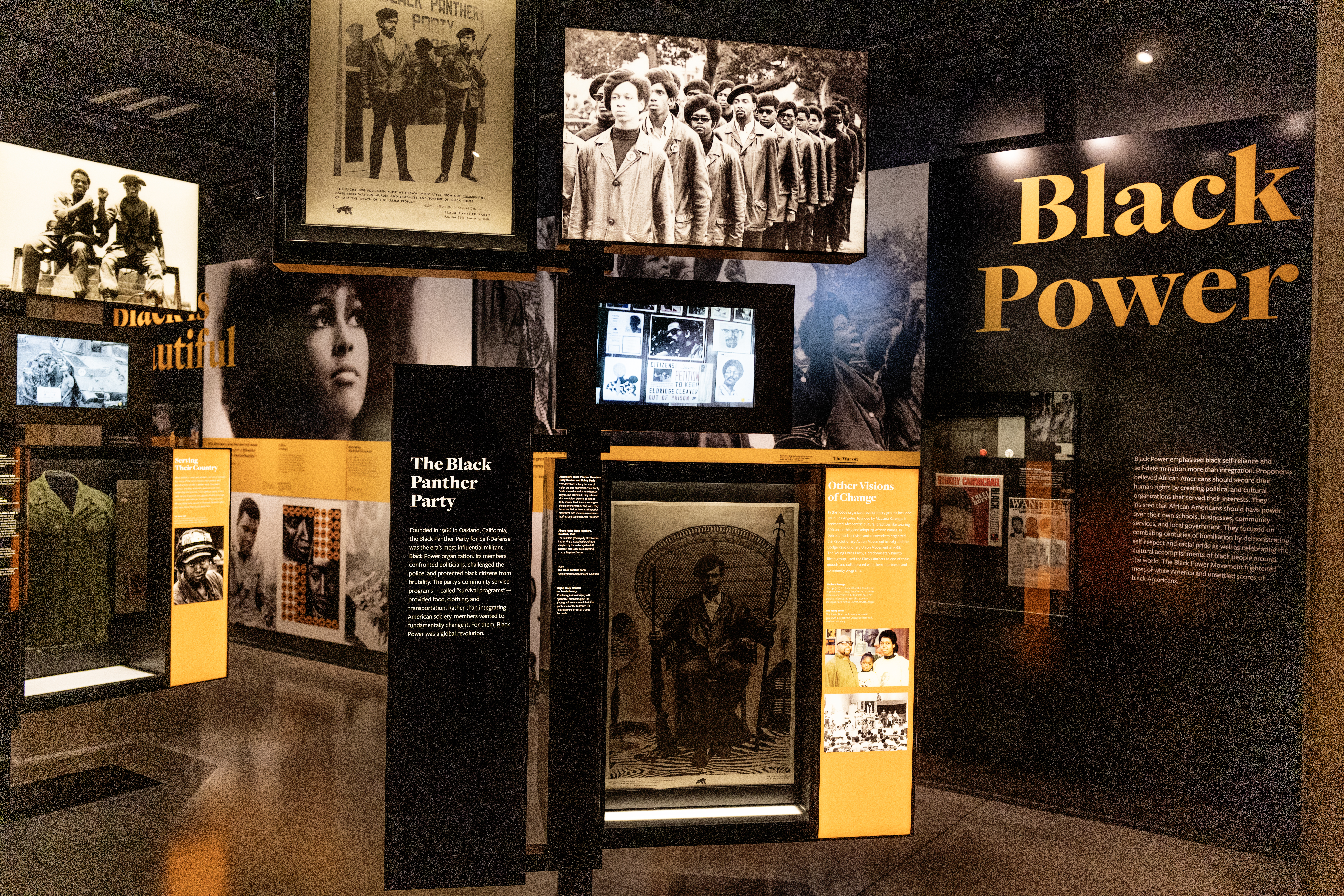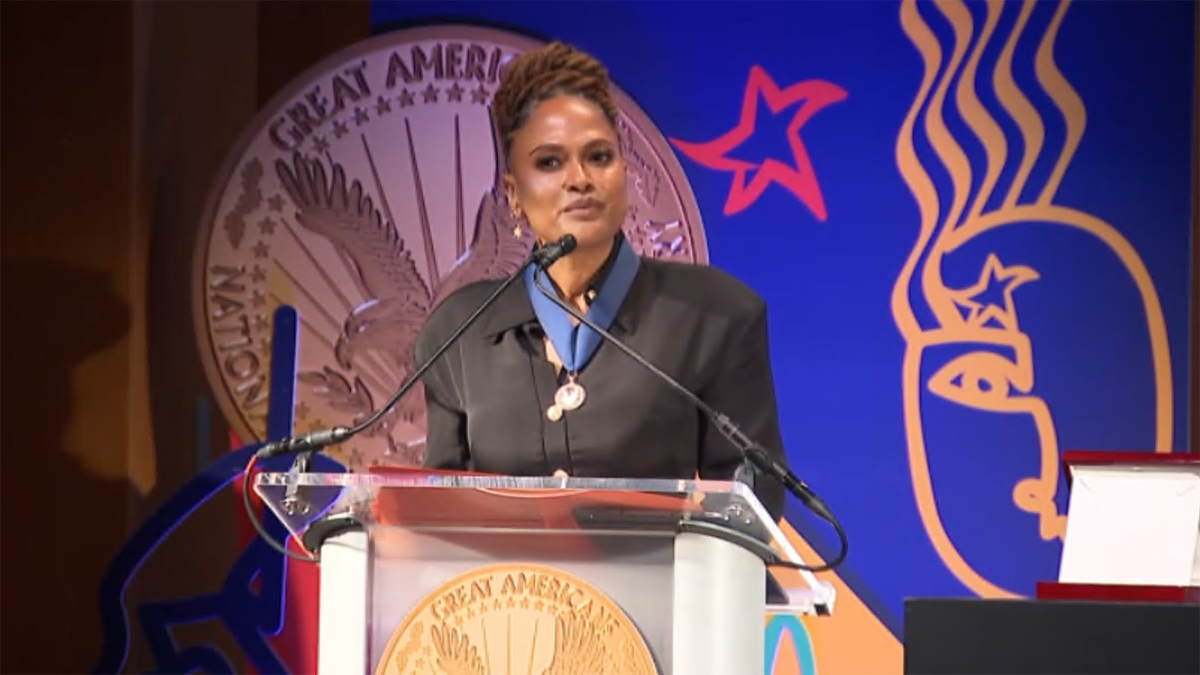Vanishing History? Artifacts Removed from African American Museum
Vanishing Voices: Fear Grips African American History Museum as Artifacts Removed
A History Under Threat? Artifacts Disappear From National Museum
Imagine walking into a museum, eager to connect with your past, to learn about the struggles and triumphs of those who came before you. Now, imagine finding empty spaces where those stories used to be, the artifacts that brought those narratives to life suddenly gone. This is the unsettling reality facing some visitors to the National Museum of African American History and Culture (NMAAHC) in Washington D.C., as concerns mount over the removal of historical objects.
The Whisper Campaign: Owners Allege Artifacts Are Being "Wiped"
According to reports, the owners of some of the very items that made the museum so powerful are claiming their pieces are being taken down. They say these artifacts, tangible links to the past, are being "wiped" from the displays, leaving a void where history once stood. **This accusation is sending shockwaves through the community and raising serious questions about the future of representation within the museum.**
A Shadow of Doubt: The Trump Administration's Executive Order
Adding fuel to the fire is the implication that these removals are linked to an executive order issued by the Trump administration. This order, reportedly aimed at curbing funding for programs with "improper ideology" within Smithsonian museums, has triggered fears that it is being used to selectively erase or alter historical narratives. Is this censorship? Is it revisionism? Or is it simply a shift in curatorial focus? The lack of transparency is breeding distrust.
Visitor Disappointment: A Race Against Time
The news of potential artifact removals has clearly spread like wildfire. Some visitors interviewed expressed disappointment and frustration, stating that they strategically planned their visits to see specific exhibits, concerned that these items might disappear. It's a sad state of affairs when people feel the need to rush to witness history before it's potentially rewritten or erased. **This highlights the deep emotional connection people have with these objects and the stories they tell.**
The National Museum of African American History and Culture's Mission
Before delving further into the controversy, let's remember the core mission of the NMAAHC. It's a place dedicated to the documentation of African American life, history, and culture. The museum's goal is to preserve the legacy of a people who have faced countless hardships, celebrated remarkable achievements, and shaped the very fabric of American society. It is a solemn place, but also a place of great pride and celebration.
Preserving History: The Museum's Role as a Time Capsule
The importance of artifacts in storytelling
Artifacts are more than just objects; they are tangible representations of the past. They tell stories that words alone often cannot convey. A worn-out pair of shoes can speak volumes about a journey. A faded photograph can encapsulate an entire era. These objects are powerful tools for education, remembrance, and connection.
The Power of Objects: Connecting to the Past
By removing these artifacts, are we not severing the threads that connect us to the past? Are we not silencing the voices of those who lived through these experiences? The implications are profound and potentially damaging to the museum's mission. Think of it like removing chapters from a book; the story becomes incomplete, fragmented, and less impactful.
The Executive Order: A Tool for Erasure?
Unpacking the Impact of the Executive Order
The executive order's focus on "improper ideology" raises serious concerns about censorship. Who determines what constitutes "improper ideology"? Is this a subjective judgment call that could lead to the suppression of uncomfortable or challenging narratives? History is messy. It's filled with triumphs and tragedies, heroes and villains. **To selectively sanitize or erase certain aspects is to distort the truth.**
Is This Historical Revisionism?
The fear is that this executive order is being used as a tool for historical revisionism, a deliberate attempt to rewrite the past to suit a particular political agenda. This is a dangerous path, as it undermines the very foundation of historical accuracy and integrity. We have to ask if this opens the door to further manipulation of other pieces of history, too.
The Curator's Dilemma: Balancing Preservation and Politics
Museum curators face an immense challenge in balancing the need to preserve historical accuracy with the pressures of political influence. They are tasked with presenting a nuanced and comprehensive picture of the past, even when that picture is uncomfortable or controversial. **The removal of artifacts can be seen as a failure to uphold this responsibility.**
Transparency and Accountability: The Public's Right to Know
In situations like this, transparency is paramount. The public has a right to know why these artifacts are being removed. What is the rationale behind these decisions? What criteria are being used to determine what stays and what goes? Without transparency, trust erodes, and suspicion grows.
Community Outrage: A Fight for Representation
The African American community, and indeed all those who value historical accuracy, are rightly outraged by these developments. The NMAAHC is not just a museum; it is a symbol of progress, resilience, and cultural pride. To see its integrity potentially compromised is a deep wound.
The Slippery Slope: What's Next?
The removal of these artifacts raises the question: what's next? Will other museums face similar pressures to sanitize or rewrite history? Will other voices be silenced? The potential consequences are far-reaching and deeply troubling. It's a slippery slope, and we must be vigilant in protecting the integrity of our historical institutions.
The Importance of Diverse Voices in Historical Narratives
The strength of any historical narrative lies in its diversity. It is in the inclusion of multiple perspectives and voices that we gain a deeper understanding of the past. To silence or erase any one voice is to diminish the richness and complexity of the story. The removal of African American history artifacts means the silencing of those voices and the erasure of their lived experiences.
Moving Forward: Demanding Accountability and Transparency
So, what can be done? First, we must demand accountability from those responsible for these decisions. We must demand transparency in the process of artifact selection and removal. We must support the NMAAHC in its mission to preserve and present the full spectrum of African American history. **We must be vocal in our opposition to any attempts to censor or rewrite the past.**
Preserving the Legacy: The Future of the NMAAHC
The future of the NMAAHC, and indeed of all historical museums, depends on our collective commitment to truth, accuracy, and inclusivity. We must ensure that these institutions remain spaces for education, remembrance, and dialogue. We must protect them from political interference and ensure that they continue to serve as guardians of our shared history.
A Call to Action: Protecting Our History
This isn't just about a few artifacts in a museum. It's about our collective responsibility to preserve and protect our history. It's about ensuring that future generations have access to the full and complete story, warts and all. It's about standing up for truth, justice, and the integrity of our cultural institutions. **Let us not allow the voices of the past to be silenced. Let us stand together to protect our history.**
Conclusion: Protecting Historical Integrity
The removal of artifacts from the National Museum of African American History and Culture has ignited a firestorm of controversy, raising critical questions about censorship, historical revisionism, and the future of representation within our cultural institutions. The implications of these actions extend far beyond the museum walls, threatening to undermine the integrity of our shared history. The need for transparency, accountability, and a renewed commitment to inclusivity has never been greater. Let's ensure that the voices of the past continue to be heard, and that our history is preserved for generations to come.
Frequently Asked Questions
- Why are artifacts being removed from the NMAAHC? The reasons for artifact removals are not entirely clear, but some speculate that the Trump administration's executive order targeting programs with "improper ideology" within Smithsonian museums may be a contributing factor.
- How does the executive order impact historical museums? The executive order could potentially lead to the suppression of certain narratives or perspectives deemed to be politically unfavorable, raising concerns about censorship and historical revisionism.
- What can I do to voice my concerns about this issue? You can contact your elected officials, sign petitions, support organizations dedicated to preserving historical integrity, and engage in open dialogue with your community.
- How does artifact removal affect the integrity of the NMAAHC? Removing artifacts, especially without clear justification, undermines the museum's mission to comprehensively document African American history and culture, potentially silencing important voices and perspectives.
- What are the potential long-term consequences of these actions? The potential long-term consequences include a erosion of public trust in historical institutions, the distortion of historical narratives, and a chilling effect on the free exchange of ideas and perspectives within the cultural sphere.

